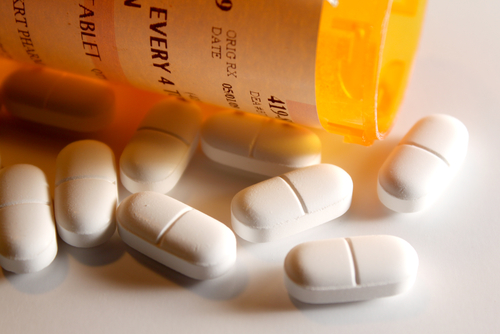NfL Promising Biomarker for Predicting Tecfidera Response
Written by |

Low levels of serum neurofilament light chains (sNfL) prior to treatment predicts an optimal response to Tecfidera (dimethyl fumarate) and reduced immune cell overactivity in multiple sclerosis (MS) patients, a study reports.
The investigators noted the importance of identifying patients likely to have an optimal response to Tecfidera and dimethyl fumarate generics “to avoid potential relapses or disability progression in suboptimal responders.”
The study, “Low serum neurofilament light chain values identify optimal responders to dimethyl fumarate in multiple sclerosis treatment,” was published in Scientific Reports.
Tecfidera, developed by Biogen, is a first-line treatment for relapsing-remitting MS (RRMS) that slows disease progression and reduces relapse rates, by lowering inflammation and oxidative stress — cell damage caused by high levels of oxidant molecules.
In the optimal response to the therapy, patients shift from an inflammatory immune cell profile to a profile of immune tolerance, which prevents the immune system from damaging the myelin sheath surrounding neurons.
NfL level in the serum (blood) is a reliable biomarker for inflammation and nerve damage in MS patients, and had been indicated as a potential marker for treatment response.
In the open-label TREMEND study (2014-000254-11) — a Phase 4 trial that investigated biomarkers of Tecfidera response in newly-diagnosed patients with active RRMS — treatment with Tecfidera reduced NfL in the serum, cerebrospinal fluid, and plasma of patients.
Researchers at the Ramón y Cajal University Hospital, in Spain now sought to determine if sNfL levels prior to Tecfidera can predict treatment response in RRMS patients. sNfL levels were measured at baseline (before treatment) and three, six, and 12 months into treatment.
A total of 80 patients were recruited for the study, 76% of whom were women. The patients had a median age of 41.5 and a median disease duration of 9.5 years. Of the 80 patients, 31.3% were treatment-naive.
At baseline, the median sNfL level was 10.1 picogram (pg)/ml, which decreased by a median of 4.0 pg/ml at three months and 6.7 pg/ml at 12 months. This reduction was independent of disease activity at the time of treatment initiation.
The team then examined how sNfL levels changed in optimal responders — patients who achieved no evidence of disease activity, defined as absence of relapses, disease progression, and no new or enlarging brain lesions – and suboptimal responders (those with ongoing disease activity) after one year of treatment.
After one year, there were a total of 50 optimal responders and 30 suboptimal responders.
Results showed that optimal responders already had lower median sNfL levels than suboptimal responders before initiating treatment. While both groups experienced a gradual decrease in their sNfL levels over time, optimal responders had lower levels for most of the study’s duration, except at 12 months.
A threshold for predicting Tecfidera treatment response based on sNfL level then was established. Patients with sNfL levels of less than 12 pg/ml at baseline were more likely to have no evidence of disease activity at one year into treatment, even after adjusting for disease activity in the year prior to treatment and at baseline.
Similarly, patients with sNfL levels of less than 7 pg/ml at three months into treatment were more likely to have no evidence of disease activity at one year.
The researchers also investigated immune cell profiles in 62 RRMS patients at baseline and six months into their Tecfidera treatment. At baseline, 36 of these patients had low sNfL levels (less than or equal to 12 pg/ml) and 26 had high levels (greater than 12 pg/ml).
Notably, patients with low sNfL at baseline showed a significant reduction at six months in populations of effector immune cells that are normally overactive in MS.
“This strongly suggests that these baseline sNfL values identify MS patients capable of modifying their abnormal immune response during [Tecfidera] treatment and thus, with high probability of achieving an optimal response to the drug,” the researchers wrote.





